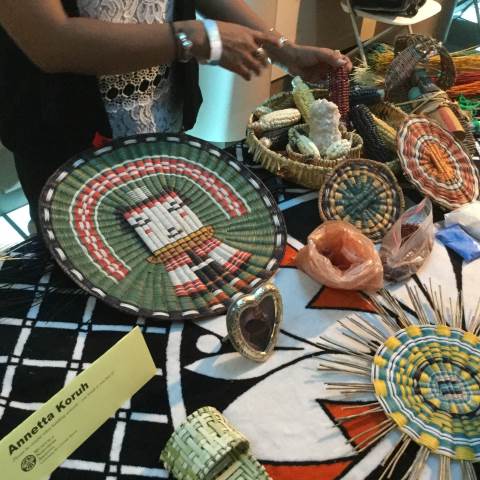

Thanks to the Thatcher Faculty Professional Development Grant, I had the unique opportunity this summer to head out west and visit Native American sites in San Diego and Arizona. I had no idea just how much history I was about to discover (or maybe uncover). These visits allowed me the chance to visit and speak with Native Americans and find out history from their perspective. This is part 3 of the travelogue of my experiences and will explore the Native American sites I visited in California.
I posed the following question in my last blog, "Isn't looking back at history supposed to make us think about what we, as history/social studies teachers, are teaching to the modern student?" I do believe the answer to that question is a resounding yes! I have also tempered, however, that this generation of student needs "physical" proof that allows me to convince them of the lessons I want them to learn.
I do realize that this isn't always the case. Talking to my class about the Westward Movement and events like the California gold rush, the building of the transcontinental railroad, the Louisiana Purchase, Lewis and Clark's expeditions, the industrial revolution and the Trail of Tears it is hard to provide actual physical evidence for them to see. Despite how old they think I actually am, I just wasn't there to share what I know about each of those stunning events in our country's history.
The most amazing thing this summer was the opportunity to actually see and be a part of the Native American culture - if only for a two week period of time. For all of the events in history I didn't see, or wasn't around to be a part of, for this brief period of time I was a part of something real and tangible and can now share my insights with the kids. Videos, interviews, and an on-site tour of the reservation with a Hopi guide have provided me with resources to be able to give my students a glimpse into the life of Native Americans in the Western United States.
Our unit of study actually begins with debunking several myths about Native Americans as a people. There are 11 myths we strive to discuss and see why they are inaccurate: all Native Americans were the same; Native Americans were not smart: Native Americans were savages; Native Americans did funny dances; Native Americans wore silly clothes; Native Americans spoke in broken words; Native Americans had red skin; Men were always the leaders; Native Americans all work in casinos; Native Americans are "Indians"; and Native Americans live in teepees today.
These are critical myths that my students need to understand are myths that have been created slowly over time. Most of these myths come from one point of view and that point of view is not necessarily that of the Native Americans. This goes back to the original question I posed - that looking back on history is supposed to make us think. We are really supposed to think when we discover/uncover myths and need to search out what is actually true and what is actually false.
The technologically advanced world/classroom we teach in is a wonderful place, but as someone said, "if it is on the internet it is true!" can be a powerful roadblock to learning, especially for third-graders. I have discovered over the years that if my students are actually able to see, touch, or experience things for themselves, then they will buy into the facts (whether they be good or bad).
There just isn't enough room in one blog to share with you how my experiences out west help me share how all of these myths about Native Americans are simply that - myths. I will tell you that being able to use videos, pictures, and lessons learned from my visit to the 3rd Mesa and to the Hopi reservation allow me to "show" them how the opposite of each of these myths is true.
It was a weekend spent among the Hopi Indians that has really helped me to share these insights with my students. The annual Hopi Festival held each year in the summer at the Northern Arizona University History Museum was an incredible gathering of artists, musicians, storytellers and dancers. These folks allowed me to interview them, video their expertise, go inside their culture for a few hours and bring back some very hands-on research to share with my students. This research has allowed me to help my class "see" how the Native Americans that we see and read about in history class aren't the same people that history has portrayed them to be.
There is so much more to share on this journey and I will in future blogs, but for now I will go back to the question I originally asked about looking back at history and I will tell you that for my modern students - the look back has definitely opened a more enlightened doorway to our future looks ahead.